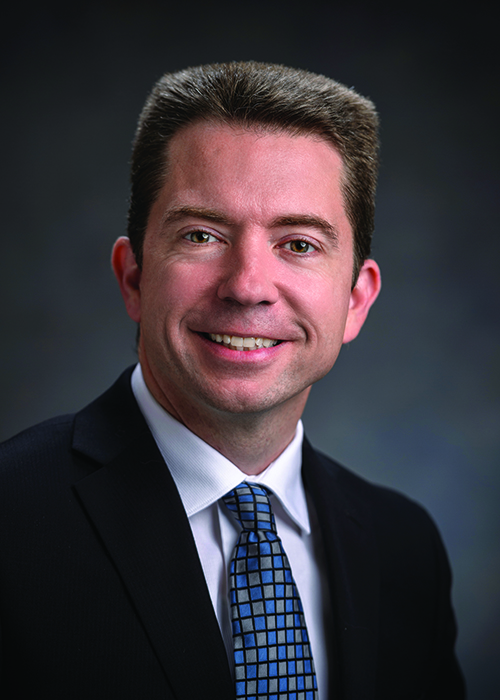Education offering brings updated
content and continuing education credits
By Elisabeth Boone, CPCU
The Target Markets Program Administrators Association recently unveiled a new professional designation and hosted a webinar to introduce the new offering. Leading off the webinar discussion was Greg Thompson, past president of TMPAA and now dean of Target University.
Thompson shared a brief history of the Program Business Professionaltm (PBPtm) designation, which he explained is an outgrowth or evolution of the Certified Program Leader (CPL) designation, which was created for program professionals in 2012.
“We discovered that many TMPAA members were highly specialized in their niche, but lacked business skills like financial, accounting, actuarial, human relations, operations, information technology, and strategic planning,” he said. “These skills are important because they enabled members to round out their insurance knowledge and become successful program managers.”
Pointing to the broadening field of actuarial science as a key skill for program administrators, Thompson said, “This is a most important skill, and almost as important is a knowledge of best practices for handling claims and controlling losses.”
Things change
Why was the PBP designation needed? “We wanted to update and improve our content, based in part on underlying changes in the business,” Thompson said. “A good example is information technology, which has changed a great deal since the CPL designation was created 12 years ago.”
Another challenge was the lack of continuing education credit. “Depending on the state, a program administrator is required to have a certain number of CE credits,” Thompson explained. “I’m pleased to say that CE credits will be available to program administrators who complete the PBP designation through The Institutes.”
Collaborative effort
How was the PBP developed? “We were fortunate to have the support of both sponsors and subject matter expert volunteers,” Thompson said. “We used a software called Insure Learn. The developer discounted the price so we could use the software in a cost-effective manner.
“So far, we’ve awarded the designation to 105 program administrators, 80 carrier personnel, 15 service providers, and two members of the TMPAA staff, for a total of 202 designees,” he continued.
“The new designation will accomplish the same objectives as the CPL and expand on those objectives,” Thompson said. “The Institutes drew on our content base in many cases,” he asserted.
“[The designation] provides a modern, professional learning platform. It teaches knowledge and skills relevant to today’s challenges. It also addresses redundancies between the CPL and the CPCU.”
—Greg Thompson
Past President, TMPAA
Dean, Target University

“Target Markets will continue to recognize the CPL, and designees can still use the post-nominal CPL,” Thompson said. “They also can get partial credit toward the new PBP.”
Designation elements
“The creation of the new designation has been a collaborative effort,” said Adam Carmichael, president of The Institutes Knowledge Group. “The new designation has five elements and incorporates two CPCU courses: Meeting Challenges Across Insurance Operations and Contributing to Insurer Financial Performance. The remaining PBP courses are Becoming a Strategic Program Administrator, Understanding PA Contracts and Submissions, and Ethical Decision Making in Risk and Insurance.”
The first of the two CPCU courses addresses the insurance value chain, how claims fulfill the insurer promise, leveraging commercial underwriting strategy, personal lines underwriting, gaining a competitive edge through marketing, expanding capacity with reinsurance, and the actuary’s role.
The second CPCU course covers topics like taking a holistic view of insurer finances, key financial measures, insurer financial statements, analyzing key ratio results, assessing investment opportunities, and strategically managing capital.
The first PBP course is Becoming a Strategic PA. Topics are PAs and the insurance value chain, PA leadership skills, optimizing risk management strategy, mergers and acquisitions, captive insurers, and maximizing results with technology.
“The creation of the new designation has been a collaborative effort. [It] has five elements and incorporates two CPCU courses … .”
—Adam Carmichael
President
The Institutes Knowledge Group

The second CPCU course covers topics like taking a holistic view of insurer finances, key financial measures, insurer financial statements, analyzing key ratio results, assessing investment opportunities, and strategically managing capital.
The first PBP course is Becoming a Strategic PA. Topics are PAs and the insurance value chain, PA leadership skills, optimizing risk management strategy, mergers and acquisitions, captive insurers, and maximizing results with technology.
The second course is Understanding PA Contracts and Submissions. Topics are contracts, agency essentials, evaluating PA contracts, the program submission process, program submission details, and concluding the submission process.
“Ethics is core to risk and insurance,” Carmichael said. “Our course is called Ethical Decision Making in Risk and Insurance, and it’s free and CE approved.”
The PBP courses are online and are designed around educational objectives. Courses are designed for self-study with online access available to flexibly fit into the candidate’s schedule.
Value of the PBP
In explaining why one should obtain a PBP, Thompson said, “It provides a modern, professional learning platform. It teaches knowledge and skills relevant to today’s challenges. It also addresses redundancies between the CPL and the CPCU.”
What’s more, he pointed out, all program administrators must earn CE credits to maintain an agent’s license, and the cost of the new course will be subsidized by sponsors for program administrator members.
For more information, visit
web.theinstitutes.org/designations/program-business-professional.
Note: Quotes have been edited for brevity and clarity.
The author
Elisabeth Boone, CPCU, is a freelance journalist based in St. Louis, Missouri.




